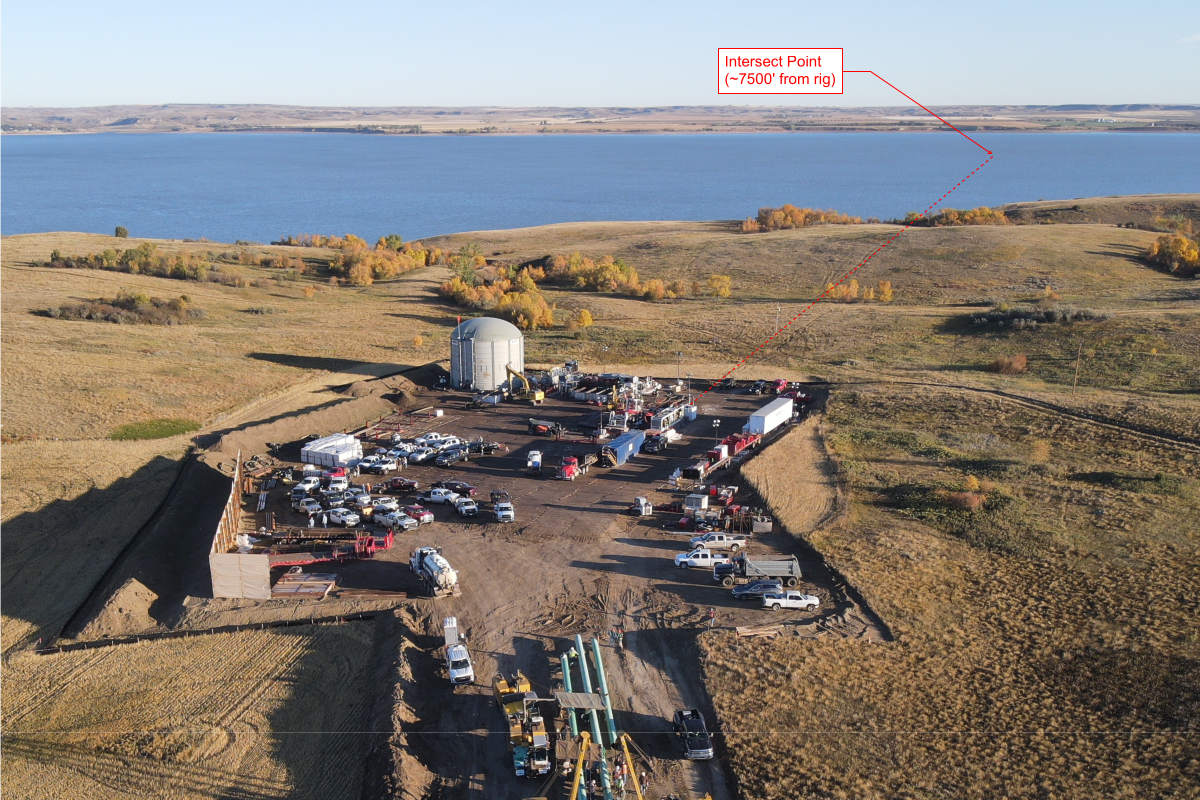Directional Drilling for Environmental Remediation

HDD technology was recognized for a variety of benefits, since directional drilling enables consultants to target a specific contaminated area, even under buildings or surface infrastructure, and provide a solution specific to that area. Extremely versatile in their broad application, directionally drilled wells have evolved to inject a variety of chemical agents, pump air into contaminated groundwater to speed microbial growth or remove contaminated soil vapor and reduce the chemical burden in affected soils.
As revolutionary as the technology was at the time, directional drilling has been a tough sell to the environmental industry. Compared to vertical drilling, the per-foot cost of directional drilling has always been high. Market penetration has also been a factor — even now, nearly 20 years after the technology was introduced, many consultants are still relatively unaware of the technology and its benefits. The result of these factors has been that HDD environmental drilling has not provided a sustainable workload for most contractors, unless they are national in scope or have other projects to fill the gaps.
Despite these difficulties, many directional drilling firms did try to enter the market during the late 1990s and into the new millennium. Most of them have since withdrawn from the industry, as the available work was insufficient to sustain reasonable growth. There are several other reasons the market has remained small.
First, horizontal well installation is far more complex and hazardous than the installation of utilities, water lines or sewers. The wells are often placed to capture contamination leaking from chemical sewers, underground piping or infrastructure on industrial sites. It can be extremely difficult to clear the borepath of utilities and other obstructions, since one-call is generally not available on private sites and as-built drawings; if they exist at all, they are often long out of date. Frequently, the separation between the bore and the existing infrastructure is minimal and tolerances are tight. The precision with which the well is placed exactly as designed has a direct impact on how effective the well will be in cleaning up the contamination. Wells that are placed too shallow or too deep do not treat the contaminated zone and can lead to non-payment on the contract or replacement of the improperly drilled well with a new one.
Next, the execution and management of an environmental project in the field requires a much higher standard of care than the average utilities or infrastructure job. In our experience, project management is best accomplished by an experienced geologist or hydrogeologist, who is professionally trained and fully capable of working directly with the client to deal immediately with technical issues during project planning and design and in the field.
The lead times on many remediation projects can be long — in some cases many months to years of project development are required, even prior to release of an RFP. Since most consultants are unfamiliar with what can (and cannot) be accomplished with a horizontal rig, they rely heavily on the drilling contractor to provide this experience during project design, so contractors must often invest time and effort in project planning, without any guarantee of project award.
Bids typically must include a well screen design so that the well can be used effectively to inject or extract fluids from the ground. The well designs provided in RFPs usually lack fully-engineered bore paths, only showing the target intervals for the placement of the well screen. Due to the unusual need for both design and drilling services, environmental projects are often awarded not to the low bidder, but to the most technically qualified firm that has a reasonable cost estimate. This translates to speaking in the consultant’s language when bidding and being able to prepare a technically superior, scientifically correct proposal — not just a fill-in-the-blank bid form.
In virtually any environmental application, the well installation and well development tasks are additional and important. These tasks aren’t required for utilities work and require specialized equipment and expertise.
Drilling fluid selection is critical — bentonite drilling fluids are notorious for damaging the formation, decreasing well production. The available alternatives work well, but are considerably more expensive and require experience to use effectively. Even tool selection is often different, and drilling companies with longevity in the business have learned these tips and techniques — the barrier to new competitors in the industry is relatively high.
In addition to the technical challenges, environmental drilling crews require a higher level of training, as well, with a minimum of 40 hours of OSHA HAZWOPER training and appropriate refresher courses, annual health monitoring and, in many cases, additional site-specific training. This obviously raises the bar for finding and retaining qualified drilling crews. In general, contractors with poor safety records or lack of experience in the environmental field need not apply.

For most directional drilling contractors, well development is an unknown, unless the company also does vertical drilling. However, successfully developing a remediation well is nearly as important as getting it installed in the proper location. Removing the drill cuttings and drilling fluid and establishing hydraulic connectivity with the surrounding formation is of critical importance in constructing a well that will perform to its design expectations.
As applications for environmental HDD evolve, it is apparent that contractors will need to become increasingly more sophisticated to meet the complex technical and regulatory requirements for these projects. Environmental restoration work is rewarding, but requires a commitment to providing the broad range of resources and experience required to complete these challenging projects.
Michael Lubrecht, LG, is senior engineering geologist with Directed Technologies Drillings, Port Orchard, Wash.




